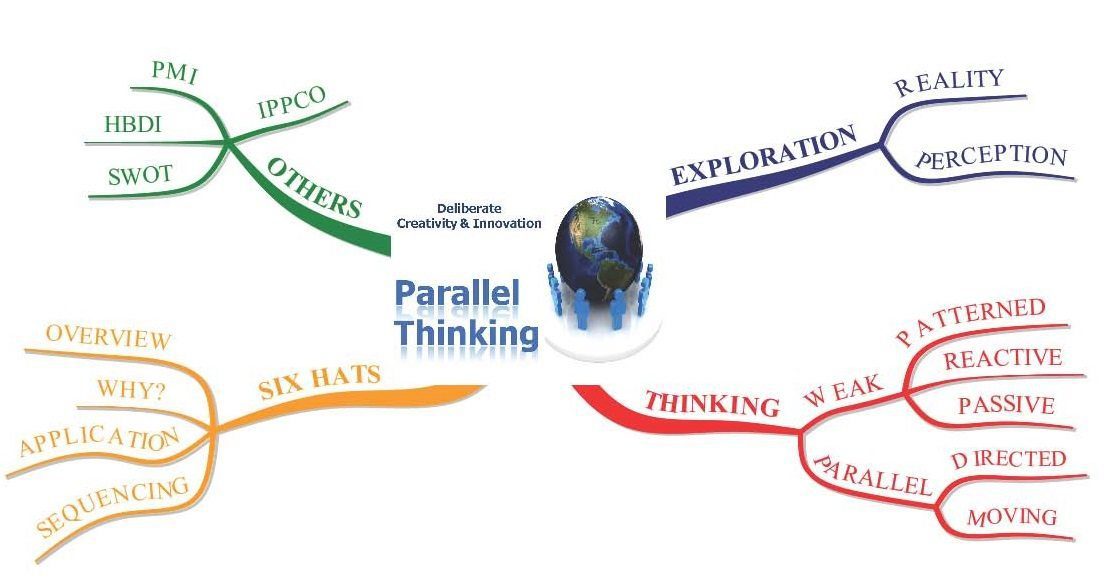DCI-07 Parallel Thinking – Module Overview
Enhancing our ability to think in directed ways that increase effectiveness and creativity. In this eModule we introduce Parallel Thinking as an approach to improving the breadth, depth and collaborative nature of thinking. Parallel thinking can be done by an individual or a team, it can be used in conversation, team brainstorming, and during private thought.
Parallel is defined as two or more lines or planes that do not intersect. In thinking terms we mean directions or types of thinking that does not intersect. In most conversations, meetings, and individual thinking, we find that our minds jump across lines of thought – a positive is immediately countermanded by a negative, an idea is judged, a feeling is suppressed. While this may be natural, it can lead to ineffectiveness. How many of us have been in a 15 minute meeting that has lasted 2 hours? How many of us suffer from procrastination because conflicting thoughts cause our brains to ‘spin’?
Parallel and Directed thinking offer a way to bring more order to the thinking. And in doing so we also find a significant increase on creativity in the thinking.
In this eModule we introduce Parallel Thinking, we look at a range of tools to conduct parallel thinking, including Edward de Bono’s Six Thinking Hats®. In eModule DCI-08 we look at the Six Thinking Hats in more detail, but now let’s look at parallel thinking.
[easy-social-share]
Learning Outcomes
Content
Exercises – Using parallel thinking tools
Book Worm Exercise
Have a play with this puzzle (sheet in materials) as discussed on the first video lesson, without looking any references up on the internet. Have a good look at it, think it through. There are no ‘tricks’ here, all the information you need is there in front of you, and we are looking for a simple answer in millimeters.
Parallel Thinking Activities
There are many different ways you can apply parallel thinking principles, and the tools shown in this module are just some of the more defined ones we use, but you could use the parallel principle in almost any situation.
To see if you grasp the power of this approach try a simple activity in designing a parallel thinking activity. For this exercise don’t use Six Thinking Hats as the next module will have you using that tool.
So here is what you might do. Think of something that you want to think through from a variety of angles, select a tool to do that activity (or design your own), and outline how you would use the technique.
For example you might do a simple SWOT analysis on yourself in relation to doing online study. Maybe try an OPV – Other People’s Views to explore how others might view a decision you’ve made or something you plan to do.
In doing this don’t just scratch the surface – determine as precisely as possible what the focus is overall and from what angles you will examine things from.
This may take a bit longer than you expect, so give it some serious time and focus. But have fun


